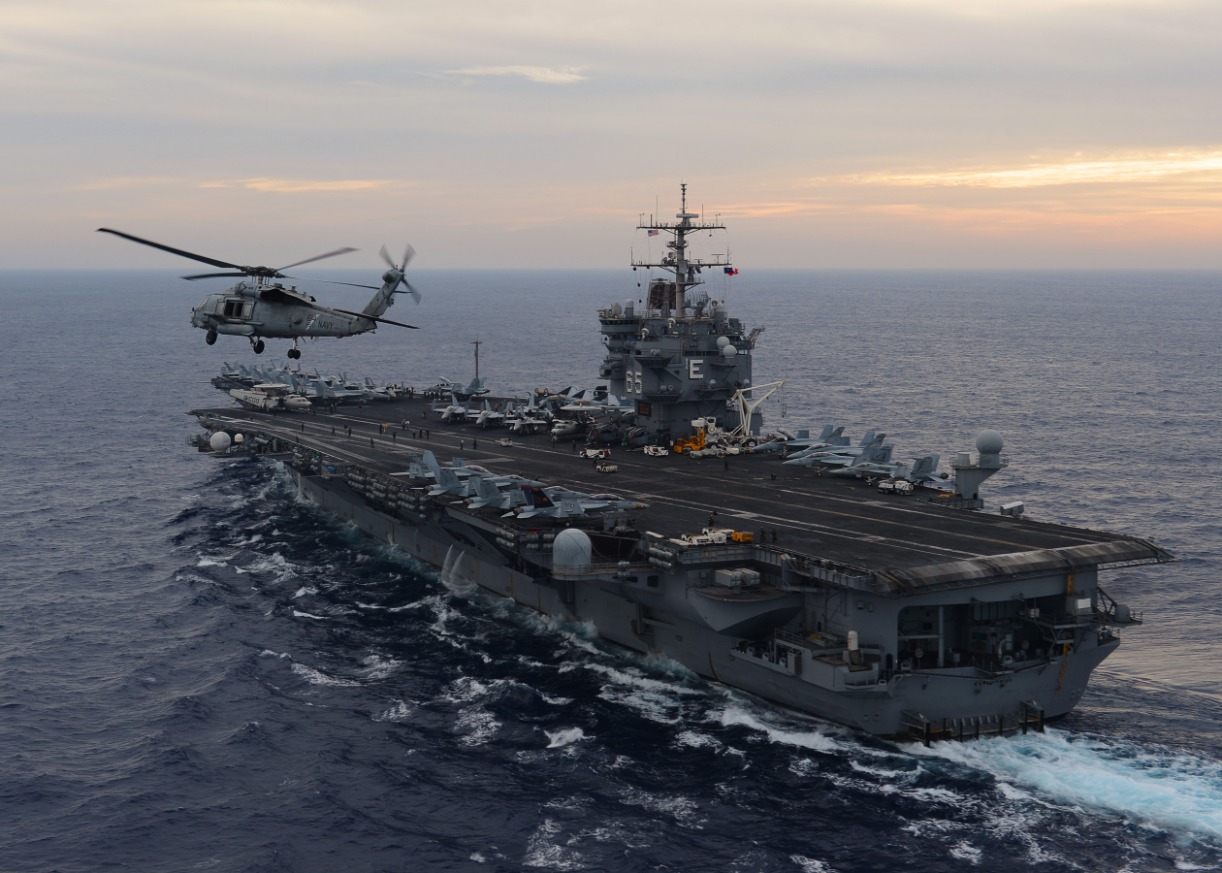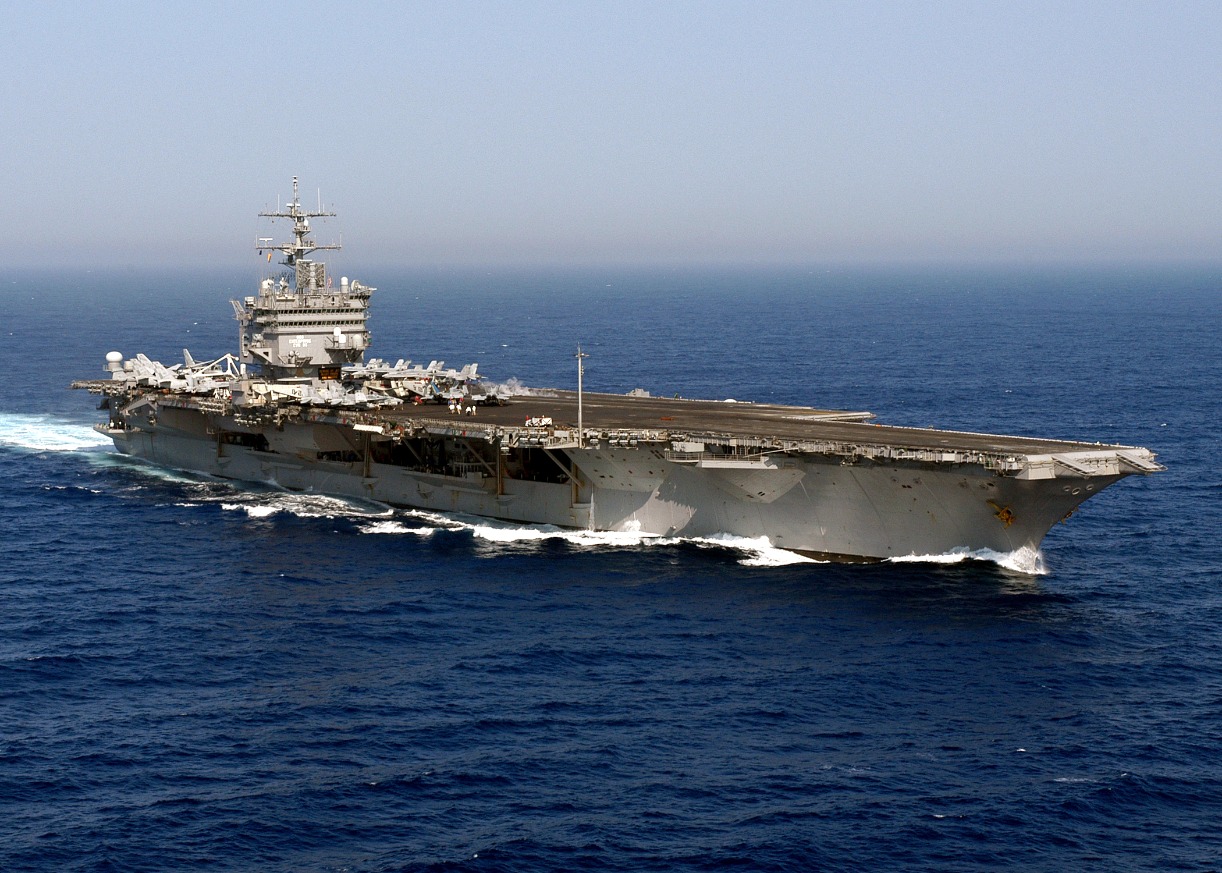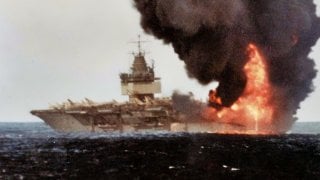USS Enterprise: The Nuclear Aircraft Carrier That Almost Sank 2 Times
The USS Enterprise (CV-65) faced two near-catastrophic incidents in the 1980s. In 1983, it ran aground near its home port in Alameda, California, due to a steering failure, and in 1985, it struck the submerged Bishop Rock, which caused severe damage.
What You Need to Know: The USS Enterprise (CV-65) faced two near-catastrophic incidents in the 1980s. In 1983, it ran aground near its home port in Alameda, California, due to a steering failure, and in 1985, it struck the submerged Bishop Rock, which caused severe damage.

-In both cases, exceptional seamanship saved the nuclear-powered carrier, highlighting the risks facing U.S. naval assets. Today, the Navy’s challenges include A2/AD threats, recruitment, and training issues.
-The Enterprise’s close calls serve as a cautionary tale, emphasizing the need for readiness and skilled crews to navigate modern threats from near-peer rivals like China.
USS Enterprise’s Near Disasters: Lessons for Today’s Navy
The USS Enterprise (CV-65) infamously ran aground just a half-mile away from its home port at the time in Alameda, Calif. The nuclear-powered Enterprise was coming back home from an eight-month deployment in the Pacific and Indian Oceans when it passed beneath the iconic Golden Gate Bridge in San Francisco around 9:30 am Pacific Time when the 90,000-ton nuclear-powered aircraft carrier missed the 400-yard-wide, 40-foot-deep ship channel by mere inches. It was an overcast and windy morning when the Enterprise ran aground.
Nine military and civilian tugboats rocked the nuclear supercarrier off the massive sandbar it had run aground on about six hours later. While the tugboats worked to dislodge the Enterprise, the great ship had started listing to port by about ten degrees.
At that point, it became a race against time—and gravity—to prevent the supercarrier from listing more or grinding farther into the bay (which could have potentially made it nearly impossible for the Enterprise to be freed, becoming a national security problem).
Enterprise On the Rocks
Ninety minutes after she was freed by the flotilla of tugboats, the Enterprise arrived at the Alameda naval facility that was the Enterprise’s home port.
A UPI report written by Susan Goldfarb from 1983 indicated that a “civilian pilot had been in charge of steering the ship as it sailed under the Golden Gate Bridge.” Although, the San Francisco Bar Pilots Association insisted that the civilian pilot had returned control of the Enterprise’s steering to the US Navy once the Enterprise cleared the Golden Gate Bridge.

It has since been determined that the helmsman lost control of the supercarrier when one of the two starboard propellers stopped functioning. With half the starboard propellers malfunctioning, the two port propellers, in the words of Peter Suciu, “to exert more lateral force than the rudder could overcome.”
The Enterprise was iconic for multiple reasons. The first was because of its inheritance. It was a successor to the heroic World War II-era aircraft carrier, USS Enterprise (CV-6). CVN-65 was iconic in its own right because it was America’s first nuclear-powered supercarrier.
What’s more, the name had been popularized in Gene Roddenberry’s Star Trek.
In fact, the aircraft carrier would go on to be featured in the hit 1986 film, Star Trek IV: The Voyage Home(although the USS Ranger, a non-nuclear Forrestal-class supercarrier would be used as a stand-in for the Enterprise since she was on deployment when that film was made).
In 1976, NASA’s space shuttle was named Enterprise, too.
As an interesting, though related, aside, one of the stars of the original Star Trek series, Japanese-American and Liberal activist, George Takei, was helicoptered aboard the “Big E” two hours before she ran aground. He was quoted in UPI as joking that, “Our vessel is the starship Enterprise and this is the USS Enterprise. We’ve got a new drink—Enterprise on the rocks.”
It was a combination of skilled disaster-relief specialists coupled with a miracle that prevented a minor inconvenience for the ship’s homesick sailors from turning into a national disaster.
The 1985 Cortes Bank/Bishop Rock Incident
After all, this wouldn’t be the only time that the “Big E” suffered a crisis at sea.

Just two years after this event, the Enterprise was involved in an even more harrowing disaster at sea. In 1985, as the “Big E” was conducting a massive “Operational Readiness Exercise” (ORE) off the coast of San Diego, she crashed into the 13-mile-long submerged, rocky island known as the “Bishop Rock.” The thick rock “tore a sixty-foot-long gash in the side of Enterprise’s torpedo-resistant hull,” reported Steve Weintz in 2015. “Three of the four giant propellers were totaled and the port keel gone,” Weintz concluded.
To prevent her from sinking, the great ship righted herself using counterflooding methods. The nuclear-powered Big E could have easily become a seaborn Chernobyl disaster, had it not been for the superior seamanship of the Enterprise crew, who managed to save the ship and repair the damage.
The point is that most Americans take their Navy for granted.
A global force with 11 supercarriers today, a fleet of nuclear-powered submarines, and a variety of other craft to project power anywhere in the world, it has been decades since the Navy has had to contend with any real threat to their warships. It has been even longer since a real disaster has taken out one of the Navy’s steel behemoths.
The Enterprise’s Near-Misses are a Warning
In the Enterprise’s grounding in 1983 and its subsequent crash into dangerous rocks in 1985, superior seamanship saved the Big E from doom. Yet, today, the Navy is confronted with grave (albeit manmade) dangers to the safety of its surface fleet—notably its carriers. Anti-access/area denial (A2/AD) has plagued the nightmares of American naval planners for almost a decade.
These systems can track, attack, and either destroy or damage essential American power projection platforms, such as the aircraft carrier. If today’s reports are at all accurate, there is both a recruitment crisis for the US Navy as well as a serious decline in proper training for the men and women who do join the Navy.
Therefore, saving a great ship, like the Enterprise, that may be stricken and in need of superior seamanship to survive, may not be as readily available today as it was back in the 1980s. The Enterprise’s experiences in the 1980s with near-misses are a wake-up call for how the Navy should be preparing for near-misses in combat against rival states armed with advanced A2/AD systems, such as China.
Author Experience and Expertise: Brandon J. Weichert
Brandon J. Weichert, a National Interest national security analyst, is a former Congressional staffer and geopolitical analyst who is a contributor at The Washington Times, the Asia Times, and The-Pipeline. He is the author of Winning Space: How America Remains a Superpower, Biohacked: China’s Race to Control Life, and The Shadow War: Iran’s Quest for Supremacy. His next book, A Disaster of Our Own Making: How the West Lost Ukraine, is due October 22 from Encounter Books. Weichert can be followed via Twitter @WeTheBrandon.
All images are Creative Commons or Shutterstock. The main image is of a 1969 fire.
From the Vault
Russia Freaked Out: Why the U.S. Navy 'Unretired' the Iowa-Class Battleships
Battleship vs. Battlecruiser: Iowa-Class vs. Russia's Kirov-Class (Who Wins?)


